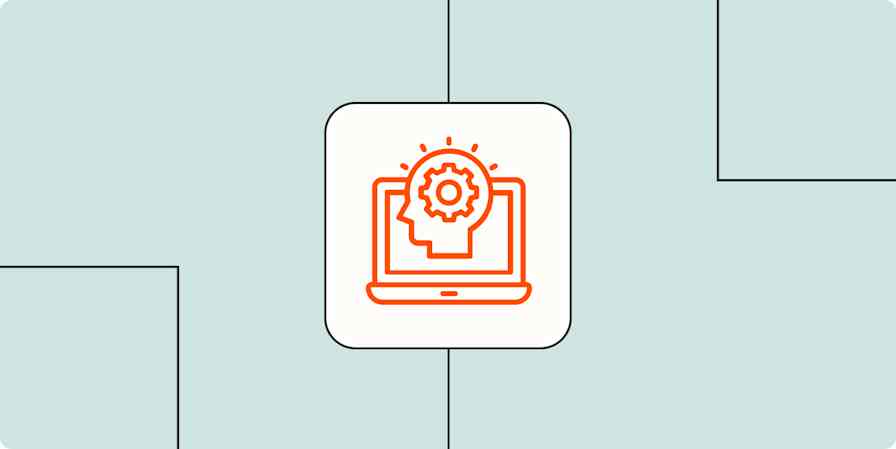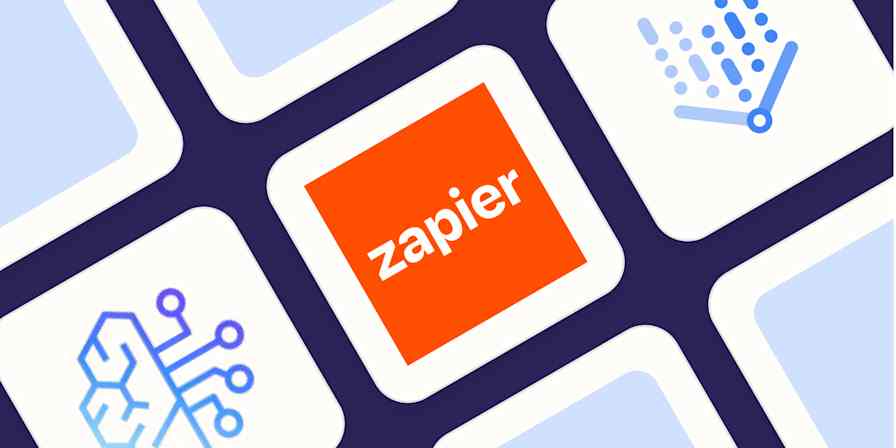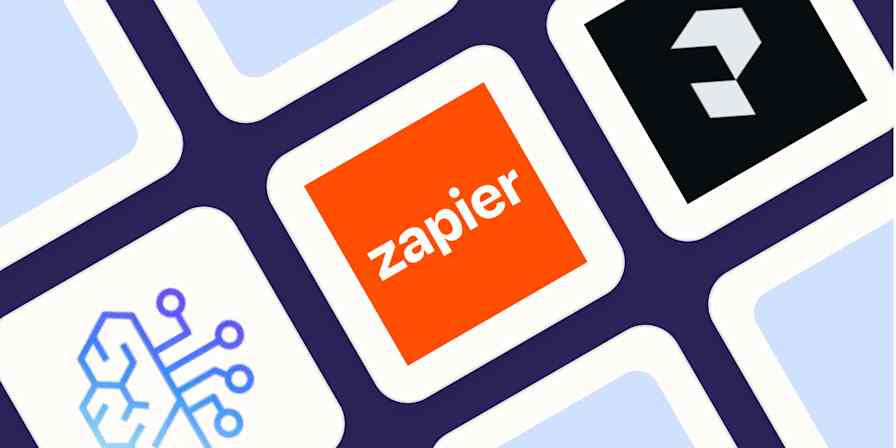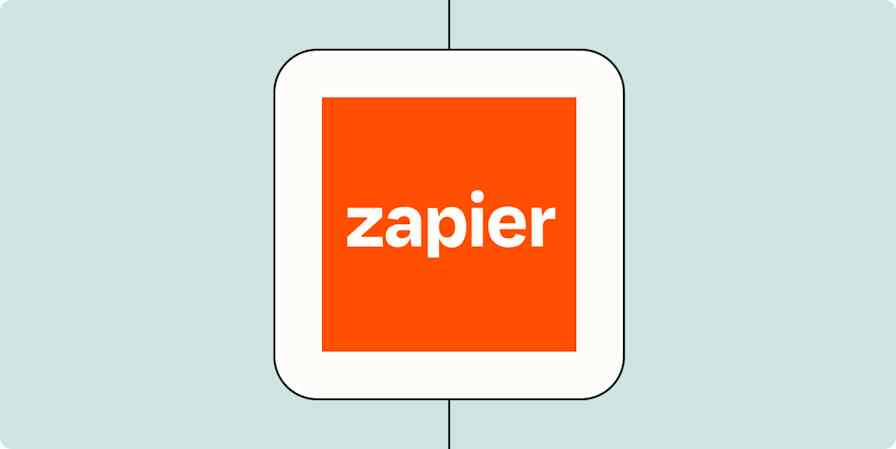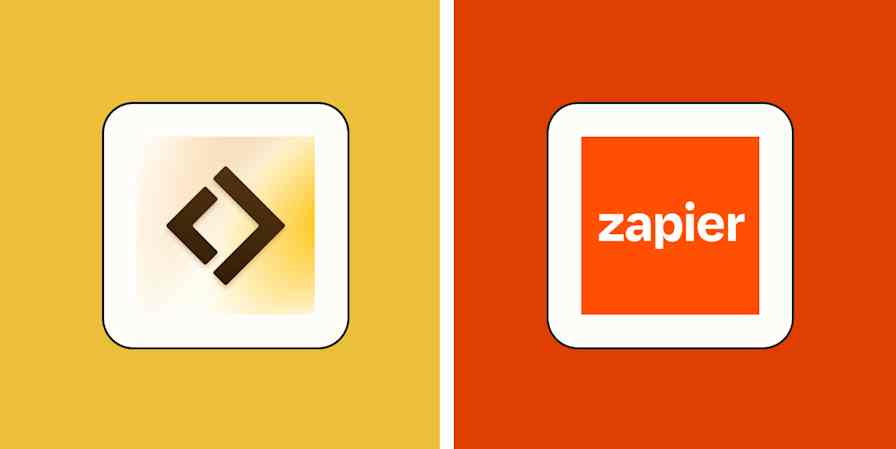ChatGPT is great out of the box—but sometimes you want it to do things your way. Maybe you want it to answer questions in your brand's voice, follow specific formatting rules, or help with a recurring task like summarizing meeting notes or drafting emails.
Custom GPTs let you build your own version of ChatGPT, tailored to your needs, without writing a single line of code. If you've been eager to build your own custom GPT, here's a step-by-step guide on how to do it.
If you're just looking for a quick refresher, here's the short version of how to create a custom GPT. (Jump ahead for more detailed steps with screenshots.)
Go to chatgpt.com/create and log in.
Click Create in the top-right corner.
Enter your instructions in the message bar of the Create page. Chat with the GPT builder until you get the results you want.
Click Configure to add advanced customizations to your custom GPT. For example, you can change your GPT's name, further refine the instructions, upload knowledge files, and set up actions.
Click Create, and select how you want to share your custom GPT.
Click Update.
Table of contents:
What are GPTs?
GPTs are custom versions of ChatGPT created by OpenAI users. All you have to do is tell the GPT builder, in plain English, what you want to create, and the builder will take it from there. Custom GPTs can also browse the web, generate images, and run code.
Confusingly, GPT also stands for Generative Pre-trained Transformer and refers to the family of AI models built by OpenAI. Why OpenAI didn't make a clearer distinction between GPT and custom GPTs is beyond me. But for the purposes of this article, GPT refers to the custom chatbots you can build.
It's worth noting that if you want your custom GPT to take actions outside of the ChatGPT interface, you'll practically need an engineering degree to set that up (more on that in a bit). If you want to build a custom chatbot that's deeply integrated with the rest of your tech stack—and that you can embed on your site—Zapier Chatbots is a better bet.
On Zapier, you can customize your chatbot in minutes using natural language, connect it with thousands of other apps, and embed it on your website or an internal portal. This way, you can orchestrate AI-powered workflows across your entire system. For example, your chatbot can collect and add lead information to your CRM, respond to customer inquiries, and send you a summary of sentiment analysis, common questions, or feedback.
Learn more about how to use Zapier Chatbots, or get started with one of these pre-made chatbot templates.
Collect leads and answer questions with AI for your Ecommerce business.
Increase lead engagement with a conversational chat experience embedded on your website.
Zapier is the most connected AI orchestration platform—integrating with thousands of apps from partners like Google, Salesforce, and Microsoft. Use interfaces, data tables, and logic to build secure, automated, AI-powered systems for your business-critical workflows across your organization's technology stack. Learn more.
Advantages of custom GPTs
While you can already customize ChatGPT responses with custom instructions, the GPT builder takes things a step further in three notable ways:
Create multiple custom GPTs. There are no limits to how many GPTs you can build, making it easy to toggle between chatbots and get the right kind of AI-powered support for the occasion. Custom instructions, on the other hand, limit you to one set of instructions per user.
Upload knowledge source files. Instead of copying and pasting text from every resource you want ChatGPT to consider when generating a response, you can upload knowledge files directly to your GPT builder, and it'll take care of the rest. Note: If your files contain sensitive information, I'd recommend opting out of letting OpenAI use your conversations to train their models.
Share your GPT. After you've fine-tuned the GPT to your exact specifications, you can easily share it with others.
How to create a custom GPT
Here's a step-by-step guide on how to create a custom GPT.
1. Log in to your OpenAI account
Before you get started, you must be on a paid plan. Already have the required account type? Go to chatgpt.com/create and log in.

If you're having trouble logging in, your best bet is to reload your page. For specific login issues, check out OpenAI's troubleshooting tips.
2. Create your custom GPT
Click Create in the top-right corner.

The GPT builder will display a split screen: the Create panel is where you enter your prompts to build your chatbot; the Preview panel allows you to interact with your chatbot as you build, making it easier to determine how to refine it. Enter your instructions in the message bar of the Create page, and then press Enter or return.
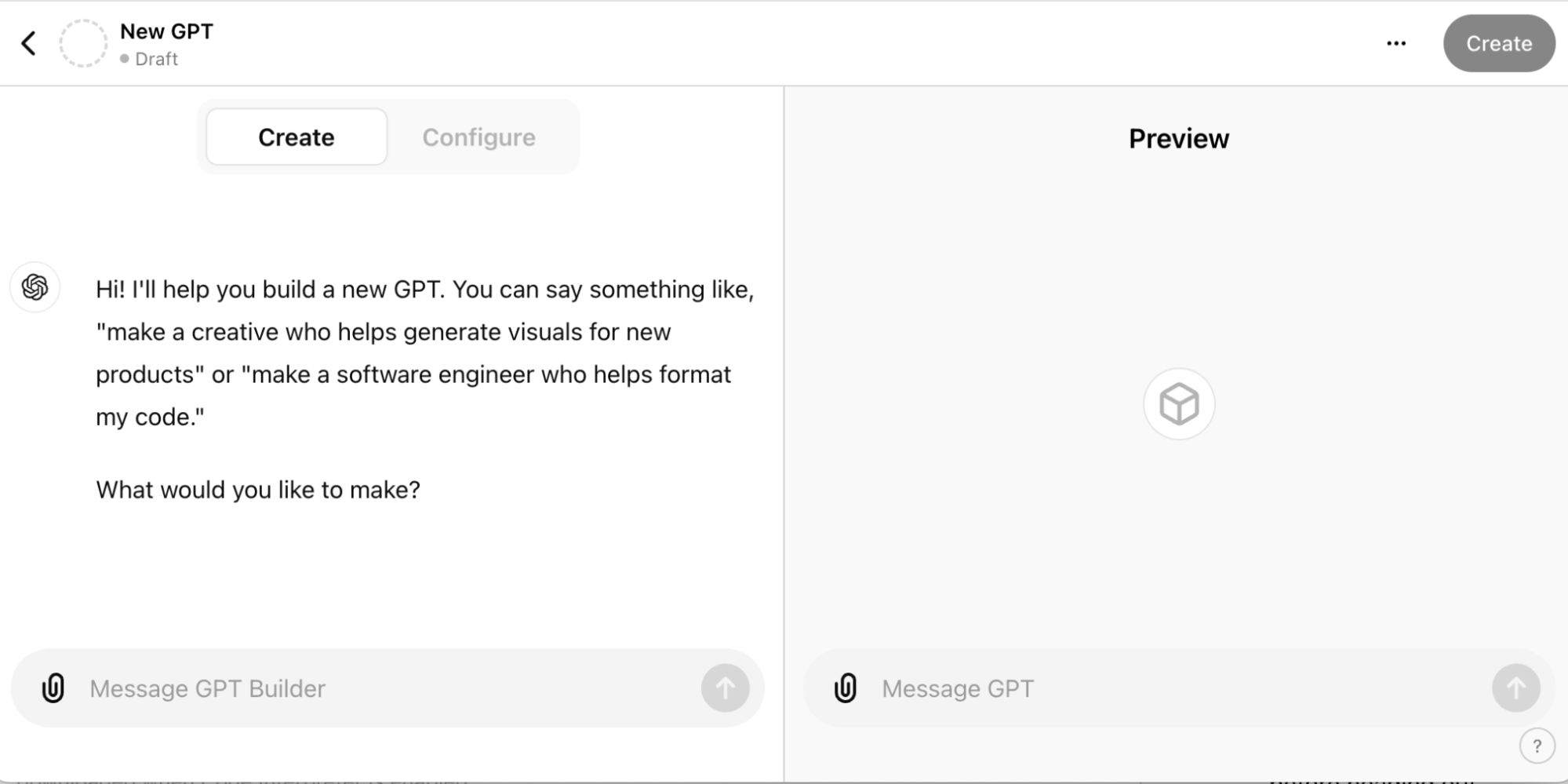
The GPT builder will then suggest a few things based on your instructions: a chatbot name, profile picture, and default conversation starters. In this example, I've asked the GPT builder to make a GPT to help me plan hikes for an upcoming trip to Utah.
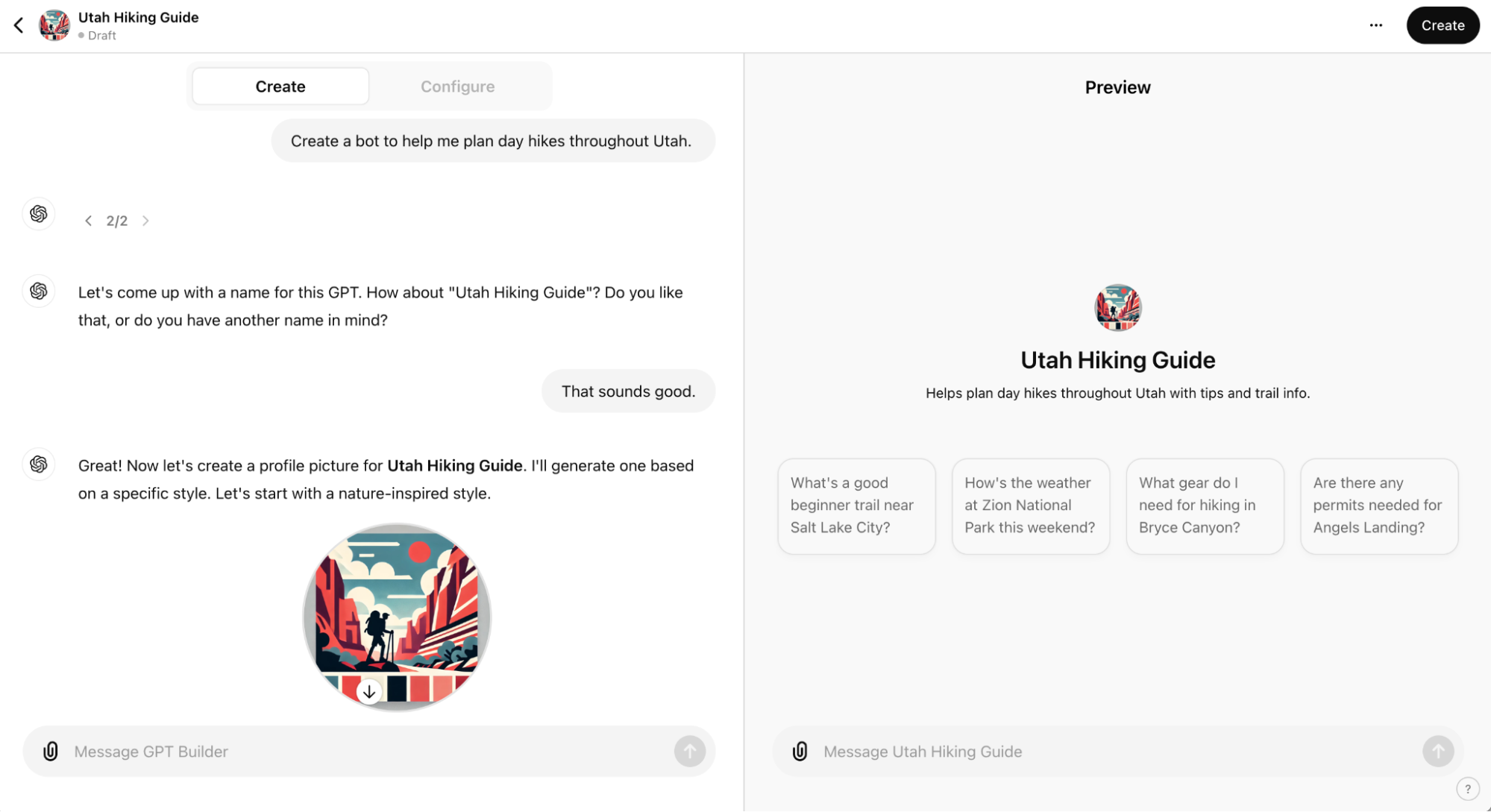
You can accept the initial suggestions or ask the GPT builder to modify them. If you accept the initial suggestions, you can always modify them later on.
The GPT builder will prompt you to enter more specific instructions to fine-tune your chatbot's behavior.
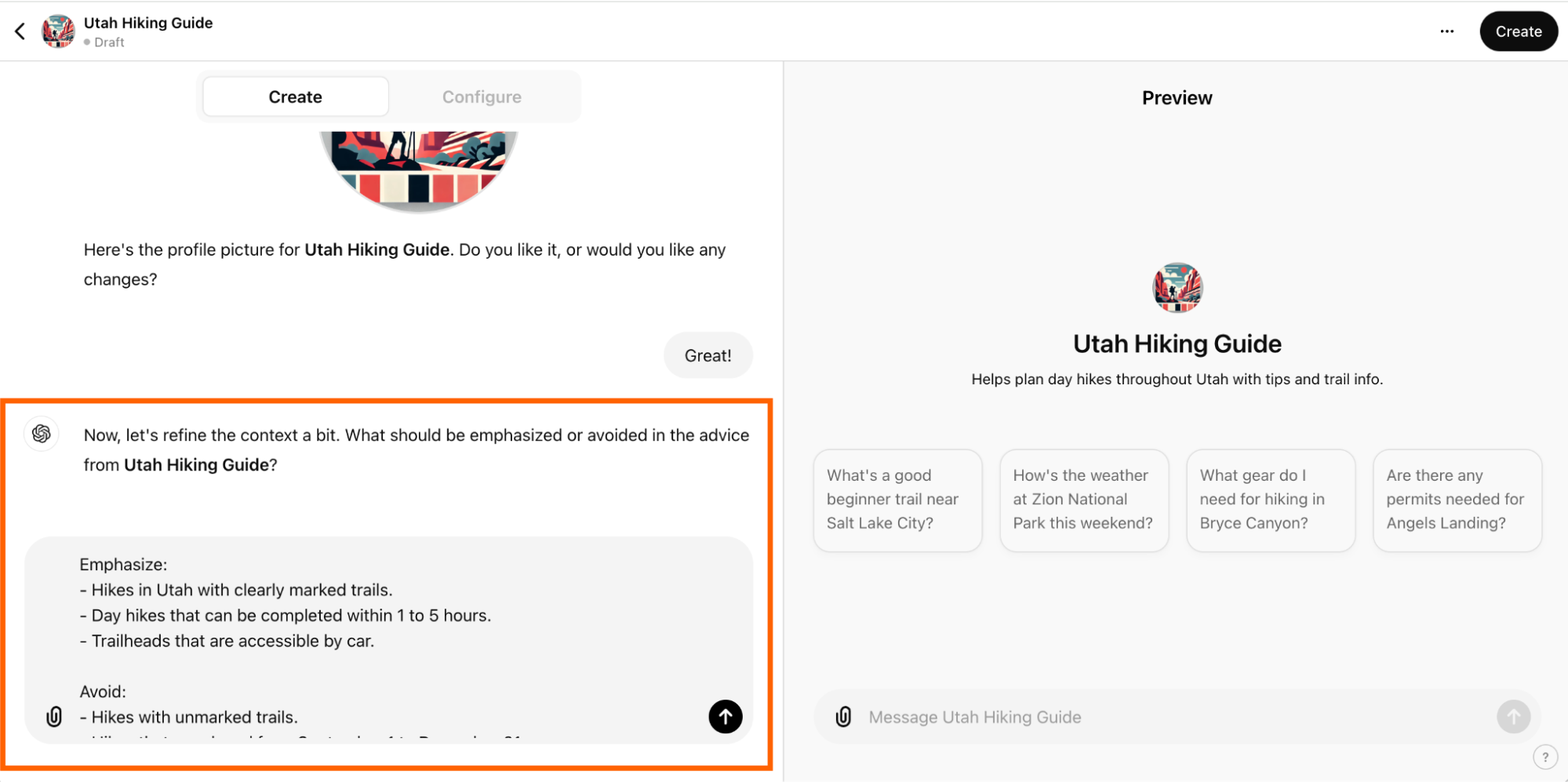
If you're not sure how you want to modify your chatbot's behavior, that's ok. My suggestion is to test your chatbot in the Preview panel—interact with it how you normally would—and use its responses to inform your modifications. For example, if your chatbot generates lengthy responses, you might tell the builder to keep the responses short. Or if the chatbot produces facts without citing its sources, you can tell it to always cite its sources.
Continue to refine your prompts until your chatbot starts to return the kinds of responses you want your final chatbot to generate.
3. Configure your custom GPT
Now that you've set up the basics, you can further customize your GPT with advanced settings.
Click Configure.
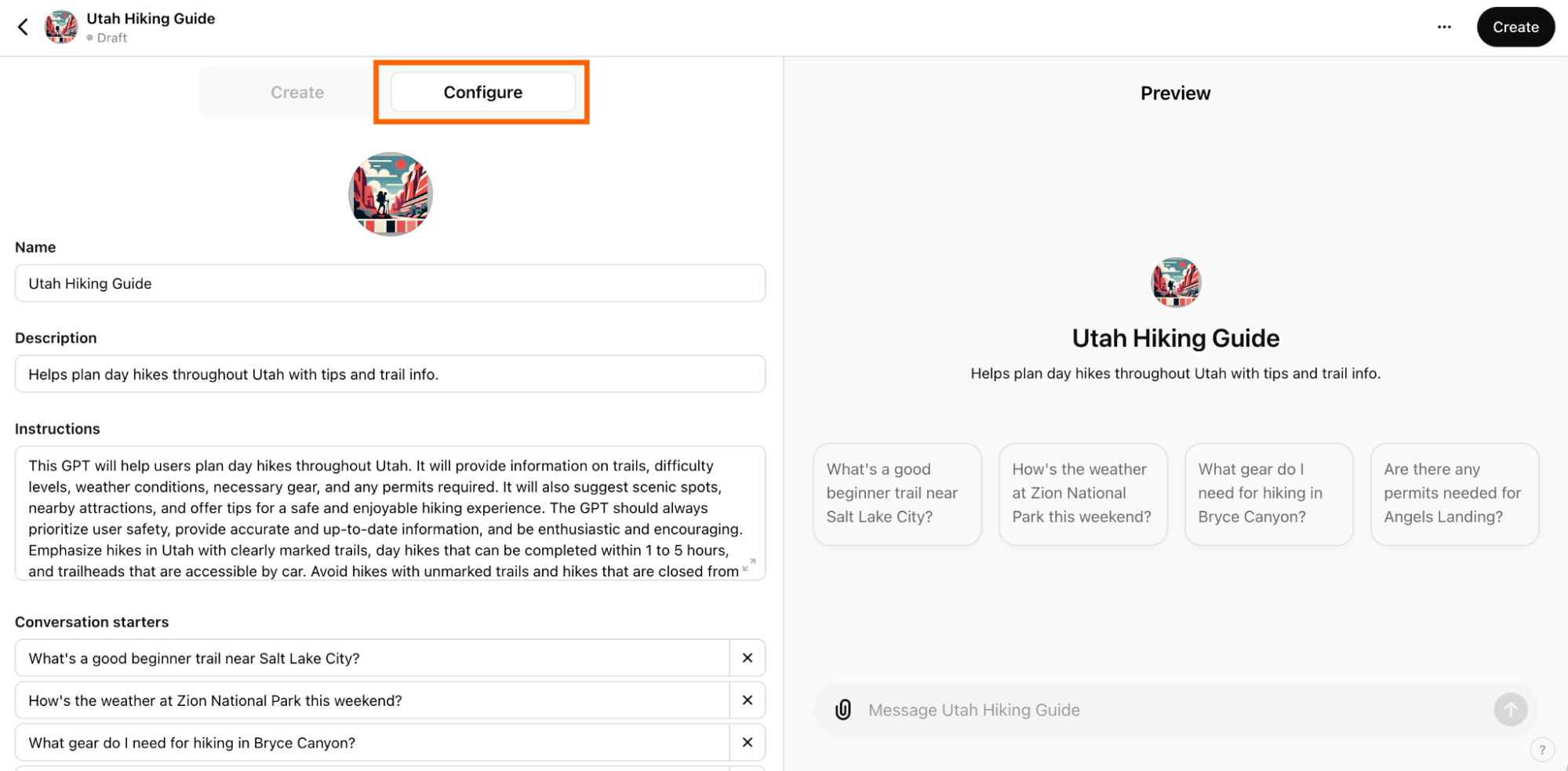
If you want, you can change your chatbot's name and description as you normally would. Here's how to modify the other advanced settings:
Profile picture. Click the profile picture. You can upload your own photo or click Use DALL·E to generate a new one.
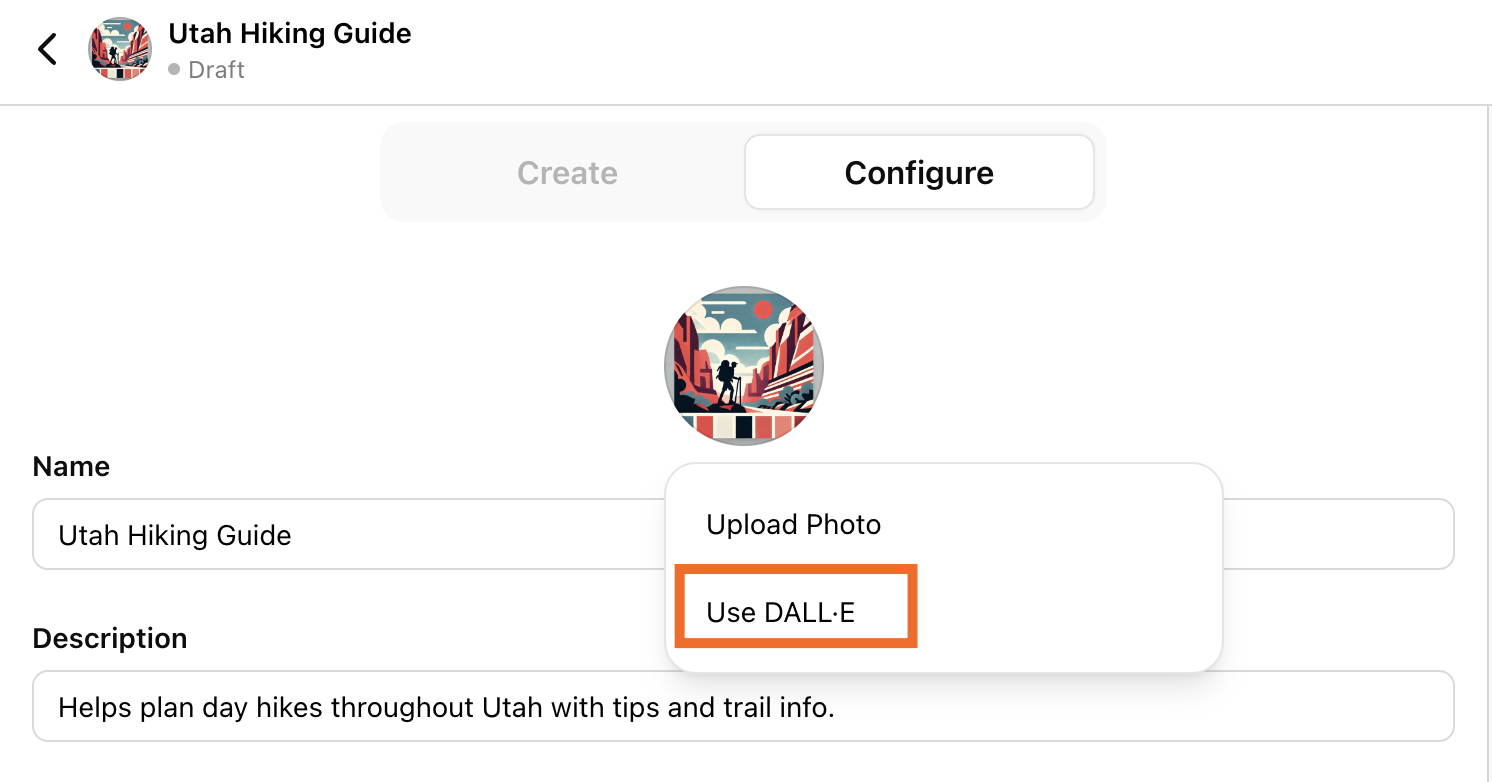
Instructions. Update the instructions generated by the GPT builder, or enter additional instructions or guidelines on how your chatbot should or shouldn't behave.

Conversation starters. Click X next to any prompt to remove it. Or enter a new prompt in an empty Conversation starters field.

Knowledge. Want your chatbot to rely on your company's style guide to draft its responses? Or maybe you want it to scan through PDFs of customer personas to give it additional context. Click Upload files, and add any relevant files for your chatbot to reference.

It's worth mentioning that my chatbot didn't consistently refer to the guide I uploaded. But this could be because I need to write clearer prompts in my GPT instructions. Tinker with it until it's using your uploaded documents in the way you intended.
Capabilities. By default, your chatbot can browse the web and create AI-generated images. If you also want it to run code or analyze data, click Code Interpreter & Data Analysis.
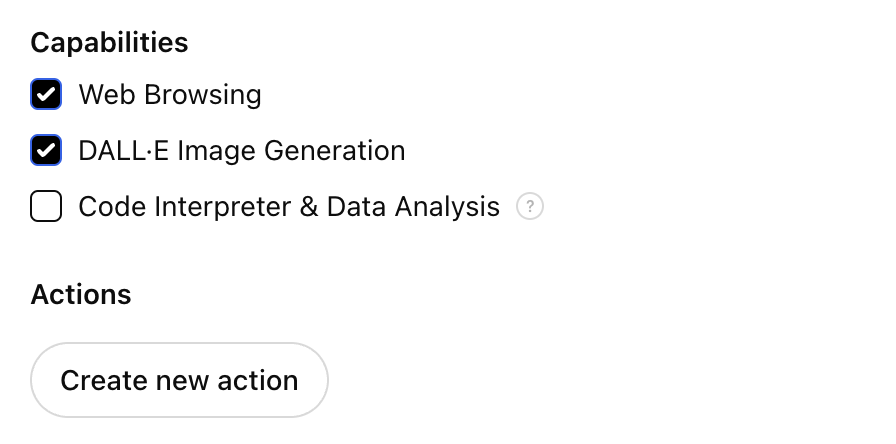
Actions. You can set up your chatbot to retrieve external information or take actions outside of the ChatGPT platform. To do this, click Create new action and specify what you want your GPT to do. Fair warning: Unlike the rest of building a custom GPT, setting up actions isn't for the faint of heart. But if words like "API" and "schema" don't scare you off, here's OpenAI's guide to setting up actions.

4. Save your custom GPT
Once you're happy with your chatbot, click Create. (If you already created your custom GPT and are publishing changes to it, click Update.)
Select how you want to share your custom GPT: by invite only, anyone with the GPT link, or publicly in the GPT store. If you're on an Enterprise plan, you can also make it available to anyone within your organization.
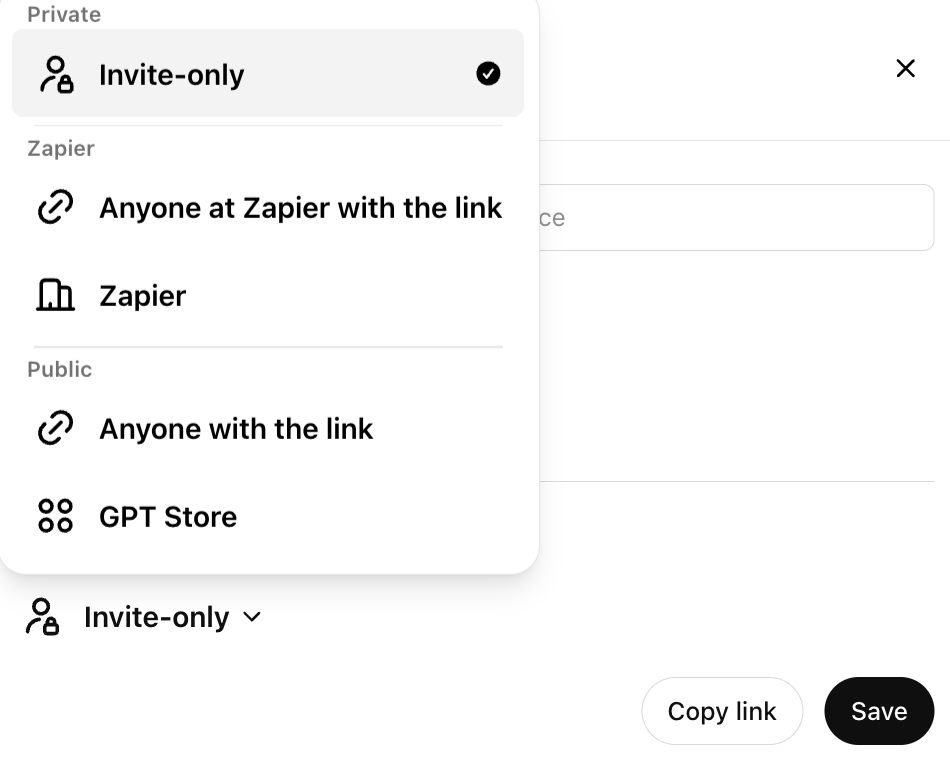
Click Update. If you're updating the sharing permissions on an existing GPT, click Save.
ChatGPT, along with any custom GPTs you build, will appear in the side panel of the ChatGPT home page. Click the GPT you want to use and interact with it the way you normally would.
Here's the custom GPT I created.

Of course, since AI chatbots still have a tendency to hallucinate, it's always a good idea to confirm the accuracy of your custom GPT's responses.
6. Share your custom GPT
The way to share your custom GPT gets muddied by a number of factors—for example, if your custom GPT's share settings are set to invite only, you'll have to add a few extra clicks to your workflow. Or, if you're on an Enterprise account, your admin may have limited your ability to share custom GPTs externally altogether.
As long as you have permission to share your GPT widely and you've adjusted your settings so that anyone with the link can use your GPT, here's the most straightforward way to share it.
In the side panel, click the GPT you want to share.
Click the name of your custom GPT in the top-left of the main conversation area.
Click Copy link.

Paste and share the link as you normally would.
How to edit your custom GPT
Here's how to edit your custom GPT.
In the side panel, click the GPT you want to modify.
Click the name of your custom GPT in the top-left of the main conversation area.
Click Edit GPT.
Update your GPT settings.
Click Update.
And here's how to delete a custom GPT.
In the side panel, click the GPT you want to delete.
Click the name of your custom GPT in the top-left of the main conversation area.
Click Edit GPT.
Next to Share, click the ellipsis (
...), and select Delete GPT.In the confirmation window, click Delete GPT.
That's it.
Now, if you'll excuse me, I have serious business to get back to—which is absolutely not code for I'm going to continue to plan every waking minute of this upcoming trip.
Build custom AI chatbots and agents with Zapier
If you like the idea of GPTs but want to integrate AI more deeply into your organization's workflows, use Zapier Chatbots. You can connect custom chatbots with thousands of other apps so you can orchestrate AI-powered workflows that span teams, tools, and systems.
For example, you can embed a chatbot on your support site to help customers troubleshoot common issues, escalate complex cases to your help desk, and log feedback in a shared database. For more inspiration, check out these pre-made chatbot templates, or start building right away.
Related reading:
This article was originally published in November 2023. The most recent update was in August 2025.


